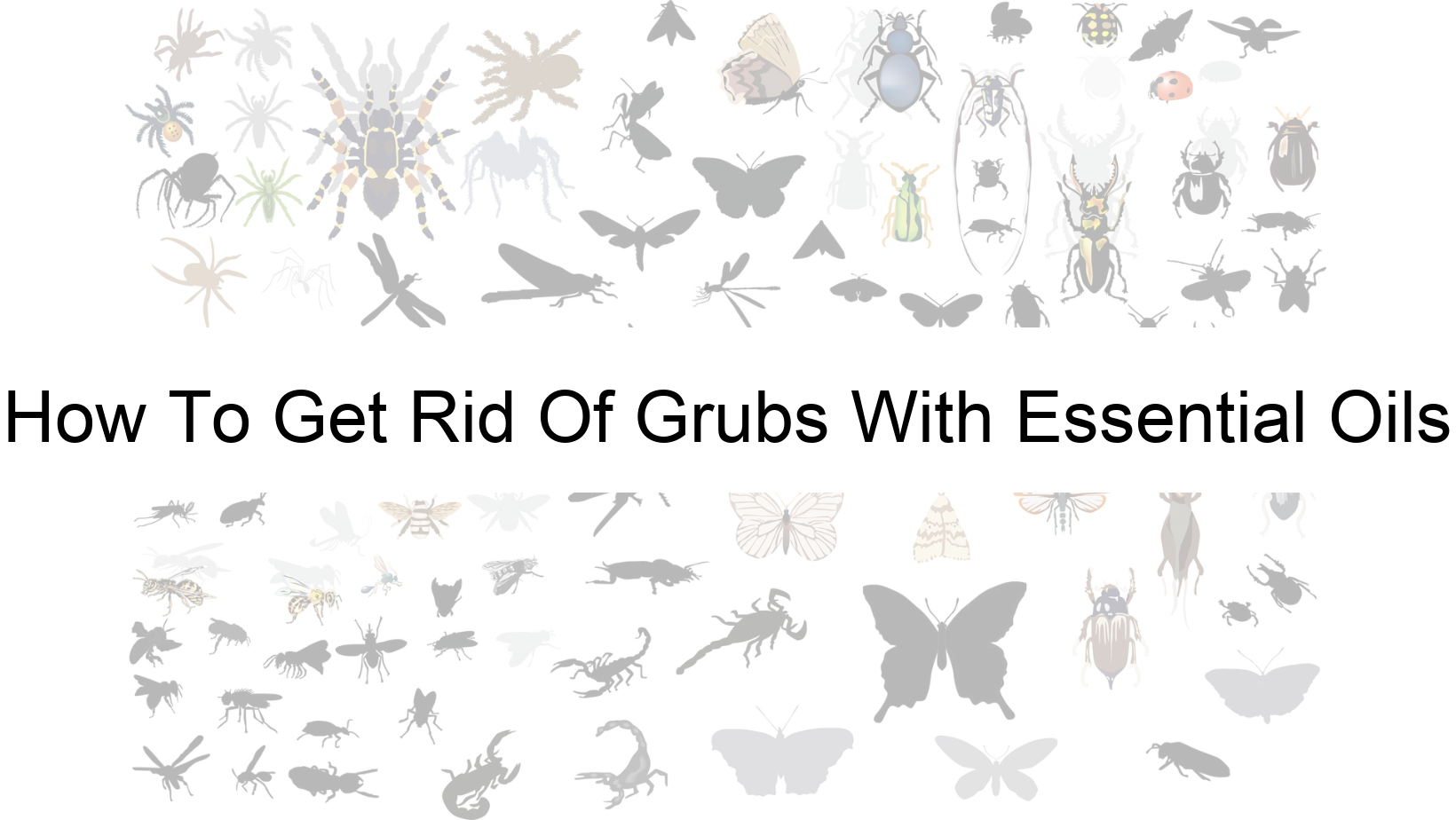According to recent reports, nearly 75% of lawns in North America are affected by destructive grub infestations annually. That’s a significant figure, which goes to show how common and problematic the issue of grubs in lawn has become. Grubs are beetle larvae that can cause quite a mess in your lawn by feeding on the roots of your grass, leaving ugly patches and dead spots. The good news is that getting rid of grubs in your lawn isn’t as complicated as you might think, and you don’t need to resort to toxic chemicals. Wondering how to get rid of grubs with essential oils? Keep reading to find out.
If you’re an environmentally conscious homeowner, then using essential oils for controlling grub infestations in your lawn would make perfect sense. Essential oils are natural plant extracts that possess potent insecticidal properties, making them ideal for getting rid of garden pests, including grubs. Using essential oils to get rid of grubs in your lawn offers a safer, sustainable, and eco-friendly solution compared to conventional chemical pesticides. This article will explore in depth how to get rid of grubs with essential oils, and why using essential oils can keep your garden chemical-free without harming the environment.
This Is How To Get Rid Of Grubs
Essential oils like neem, clove, garlic and cedarwood are effective in getting rid of grubs. Mix 1-2 ounces of the oils in a gallon of water and spray over the affected areas. Apply weekly until the grubs are gone.
Effective Essential Oils For Repelling Grubs
Grubs are soil-dwelling larvae of various beetle species, commonly Japanese beetles and May/June beetles, that can destroy lawns by feeding on the grass roots. While there are various options to get rid of grubs, the use of essential oils has received attention due to their natural origin and effectiveness in repelling these pests. Among many essential oils, some have demonstrated more scientific evidence for their effectiveness in repelling grubs.
Neem oil is one of the most studied essential oils for grub control due to its active compound called azadirachtin, which works by disrupting the insect’s hormonal balance, interfering with feeding and growth, and causing death. Azadirachtin has been shown to deter grubs from causing damage and inhibit their development into adulthood. A study conducted at the University of Rhode Island stated that neem oil reduced grub populations underneath the turf.
Cinnamon oil is another essential oil that has been shown to repel grubs effectively. Cinnamaldehyde is the major component of cinnamon oil which has insecticidal properties due to the repellant effect of cinnamaldehyde. This compound works by hindering communication between mole crickets and limiting feeding to larvae. Studies have shown that cinnamon oil effectively repels white grubs, the larvae that cause turf ruin.
Thyme oil is also believed to etwork effective against grubs due to its antifungal, antimicrobial, and insecticidal properties. Thymol is the most active compound of thyme oil, which works by damaging the insect’s nervous system and resulting in death. A recent study demonstrated that thyme oil killed 100% of the third-instar larvae of the banded cucumber beetle.
In conclusion, essential oils can effectively control grubs due to their insecticidal and repellant properties. Neem oil, cinnamon oil, and thyme oil have all demonstrated the ability to repel grubs as backed by scientific evidence. Therefore, these essential oils can be considered when deciding on a natural pest repellant for grubs in new or existing lawns.
How To Use Essential Oils Effectively
Grubs are the larvae of beetles that damage lawns and gardens by feeding on grass and other plant roots. Essential oils have become a popular alternative to chemical insecticides in controlling these pests. Some oils like neem, clove, and garlic have been proven effective in repelling grubs. However, caution is needed in the use of essential oils to prevent any potential dangers.
Topical use of essential oils on the skin of humans and pets should be avoided as it can cause skin irritation and allergic reactions. Ingestion and inhalation of essential oils can also result in respiratory problems and other health issues. It is advisable to keep them in a safe place where children and pets can’t reach.
When using essential oils as a grub repellent, it’s important to follow the manufacturer’s instructions on dilution and application. A small amount of essential oil made of the insecticide can be diluted in water and sprayed onto the affected garden areas. Alternatively, oil-soaked cotton balls can be placed near the larvae feeding grounds.
It is wise to remember that not all essential oils are safe to be used in gardens. They may leave residue on vegetables and flowers that can be harmful to insects and humans. Therefore, it is essential to conduct thorough research on which oils are safe and effective in protecting your specific plants and vegetables.
In summary, essential oils can be used as a natural and effective grub repellent, but it’s essential to use them safely in preventing adverse reactions. Topical use on the skin should be avoided, and they should be kept away from children and pets. Dilution with water and following the correct usage instructions will aid in ensuring that a safe method is employed to repel grubs.
What You Need To Know About Grubs
Grubs are not harmless creatures that are often found in lawns and gardens. Although they may appear harmless, they can cause significant destruction to gardens, lawns, and livestock. The danger that grubs pose is often overlooked, but they can be a menace to both humans and pets.
Grubs can be very destructive to crops, plants, and lawns if they are not limited. They consume the plant roots, flowers and plant tissues, causing the expected death of such groups. This makes it extremely difficult for gardeners and farmers to grow crops and maintain a healthy, lush lawn. Without proper control mechanisms, the great danger of grubs in garden and agricultural solution can lead to massive crop failures, and a significant decline in crop production, negatively impacting food security.
Grubs can also pose significant harm to pets and animals such as poultry, cows, pigs or sheep. When grubs are consumed by grazing herd animals, they can cause intestinal complications, leading to the potential for severe dehydration and electrolyte imbalance, resulting in death. As eggs, larvae or pupae, they habour infestation threat to pet; especially dogs and cats, that can lead to gastric inflammations, causing vomiting and diarrhoea, dehydration and may lead to further complications.
In residential areas, they have a disastrous implication that face homeowners. Some of the critical dangers posed by grubs include home destruction, paving, landscaping problems and fence damages, among others. As grubs finish off roots in the garden, the lawn becomes less absorbent, becoming a security threat for human activity, with respective slippy purposes.
To conclude, the potentially disastrous consequences of grubs on plants or vegetation, pets &livestock, and humans or houses, among others, cannot be ignored. Therefore, gardeners and farmers often resort to several harmful chemical procedures to address the issue, with ill effects condensing serious harm beyond control over such creatures. The ecological damages posed by toxic chemicals dictated stringent measures to fight such nuisance, into real-cost effective, advanced eco-friendly measures need to confirmed on a priority basis.
Sources:
1. Colorado State University Extension. (2016, April 15). Fungus Gnats as Houseplant and Indoor Pests – 5.584 – Extension. Extension. https://extension.colostate.edu/topic-areas/insects/fungus-gnats-as-houseplant-and-indoor-pests-5-584/
2. Gharbi, K., & Tay, J. (2022). Fumigant Toxicity of Essential Oils against Frankliniella occidentalis and F. insularis (Thysanoptera: Thripidae) as Affected by Polymer Release and Adjuvants. Insects, 13(6), 493. https://doi.org/10.3390/insects13060493
3. Publication : USDA ARS. (n.d.-b). https://www.ars.usda.gov/research/publications/publication/?seqNo115=227048

